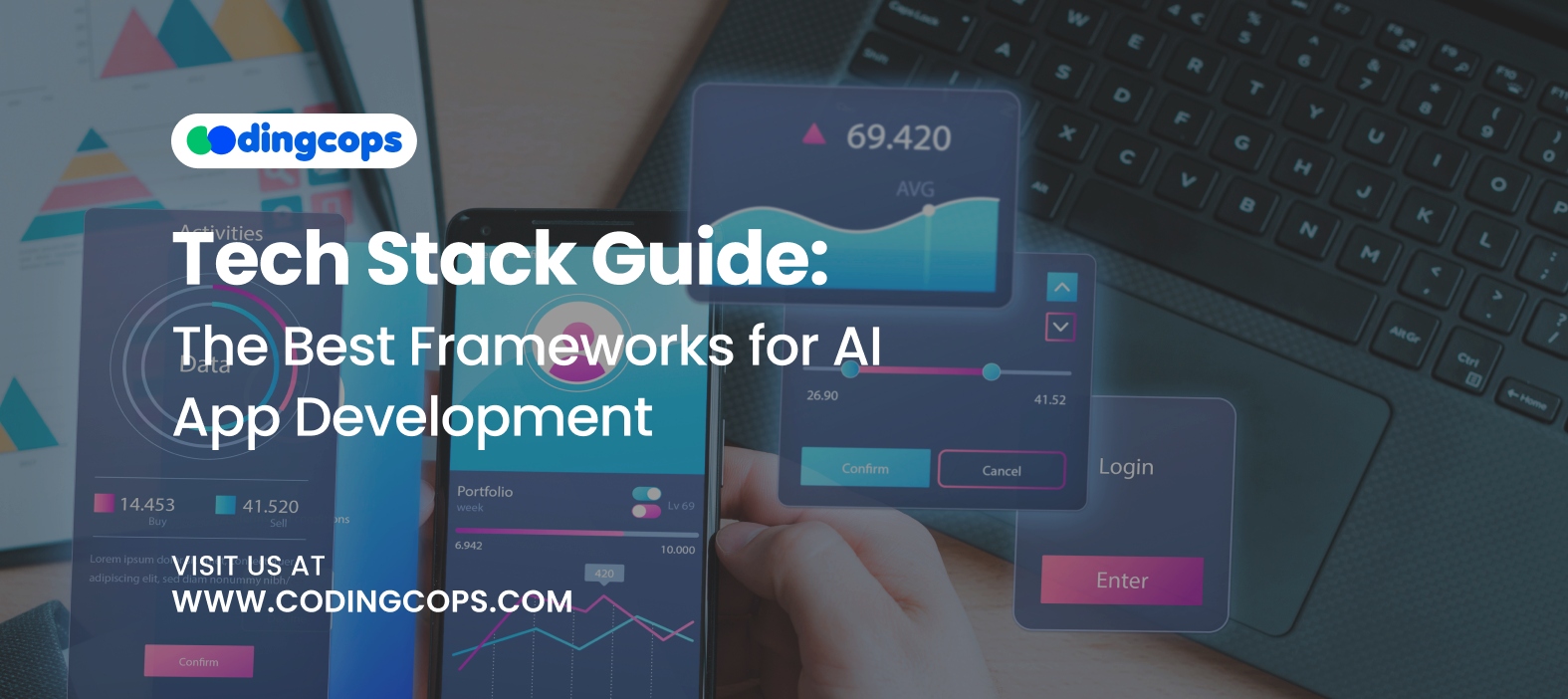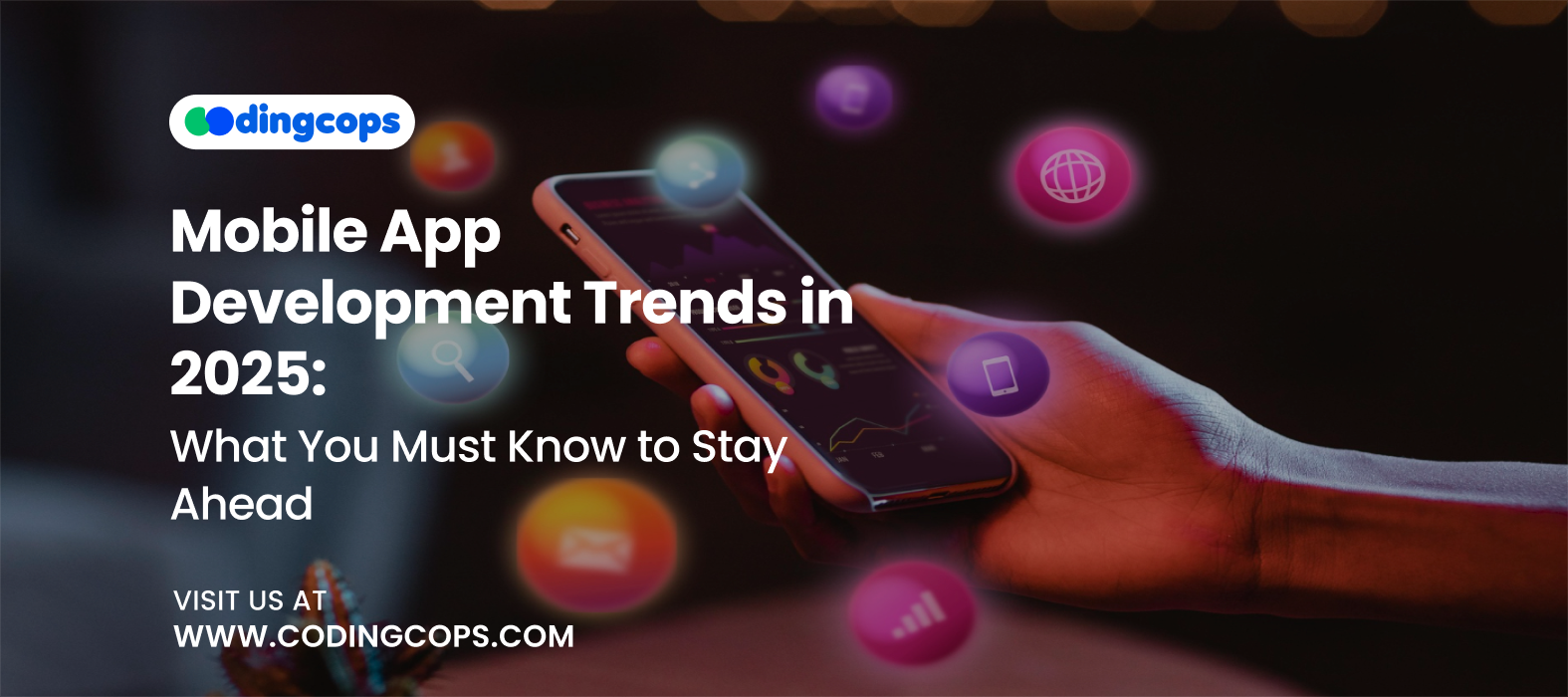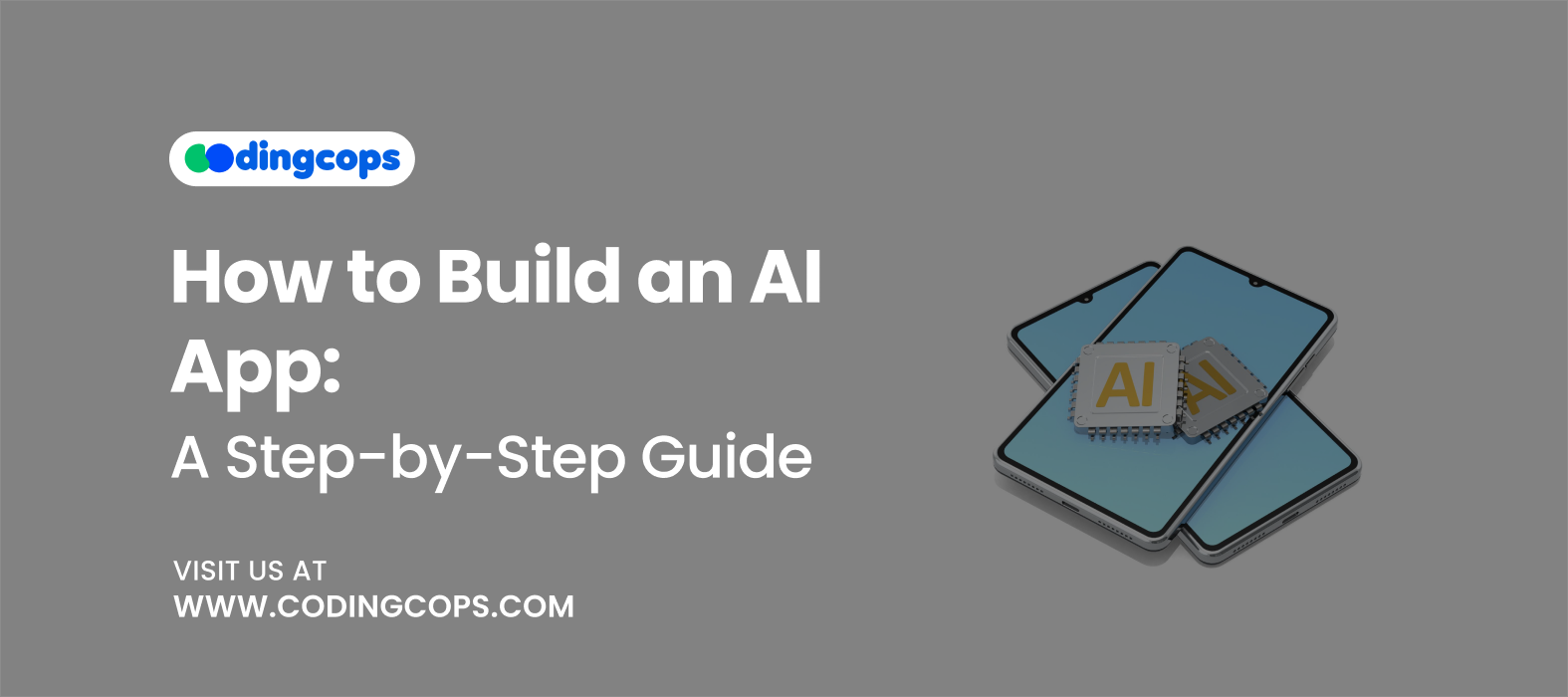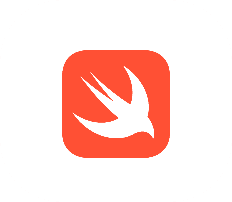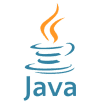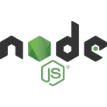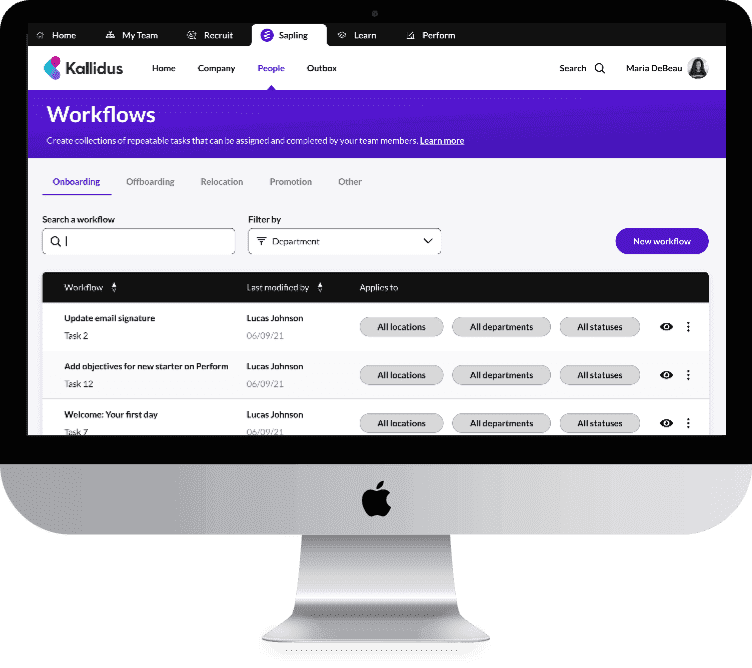The market for AI apps is expected to reach $156 billion in sales over the next five years, according to data. But it takes more than simply brilliant ideas to create AI applications. It requires the appropriate set of frameworks and technologies to guarantee intelligence and speed.
Therefore, selecting the appropriate tech stack might be the difference between a smooth, high performing AI solution and one that has no problems with scalability.
In this guide, we will discuss what tech stacks to use for developing AI applications. We’ll walk you through the most effective programming languages and frameworks.
What is the AI App Development Tech Stack?
The many levels that make up an AI tech stack are each in charge of distinct phases of development and implementation.
The primary elements of a typical AI tech stack are as follows:
- Programming Languages
- Frameworks and Libraries
- Data Handling Tools
- Deployment Tools
- Cloud and Integration Platforms
Top Programming Languages for AI Development
Python
Python is unquestionably at the forefront of artificial intelligence and machine learning. It is perfect for AI developers because of its extensive ecosystem of AI libraries. With tools like TensorFlow, developers can handle anything from data visualization.
Python provides dependability and flexibility in a range of applications, such as chatbot creation and predictive analytics.
R

R is the go to language for data scientists and statisticians. It’s widely used for data visualization and machine learning tasks. With libraries like caret, developers can easily create predictive models and perform in depth data analysis. It’s especially useful in research and analytical environments.
Java and Kotlin

Java’s efficiency and security advantages make it an excellent option for enterprise level AI applications. Large scale AI solutions have strong foundations thanks to frameworks like MOA and Deeplearning4j.

Conversely, Kotlin is becoming a more and more popular option for AI Android apps. It is perfect for mobile developers integrating ML models because of its straightforward syntax and Java compatibility.
C++
C++ is a fantastic option for embedded AI systems or applications that require real time performance because of its reputation for efficiency. Although it takes more manual scripting than Python, it provides unmatched control with memory efficiency.
Julia

A relatively new yet quickly expanding language for high performance numerical computing is called Julia. It works especially well for complicated AI tasks that need to be completed quickly, such as scientific simulations or deep learning. It is a viable option for cutting-edge AI research due to its capacity to manage big datasets effectively.
Best Frameworks for Machine Learning and Deep Learning
TensorFlow
TensorFlow is one of the most widely used machine learning frameworks. It provides a stable environment for neural network growth. Additionally, TensorFlow is appropriate for both startups and well-established companies because of its cross platform adaptability and scalability. Its uses are numerous, ranging from voice recognition to computer vision.
Additionally, TensorFlow supports TensorFlow.js for browser based machine learning and TensorFlow Lite for mobile devices.
PyTorch

PyTorch’s dynamic computation graph and developer friendly architecture have made it extremely popular. Furthermore, because of its user friendly interface and effective debugging tools, it is the framework of choice for research and prototyping. PyTorch easily interacts with Python’s data science environment and facilitates distributed training.
Keras
Model development is made easier using Keras, a high level API built on top of TensorFlow. It is ideal for novices since it enables developers to create deep learning models with less code. Keras supports numerous backends and encourages rapid experimentation due to its modular nature.
Scikit learn

Scikit Learn is still crucial for conventional machine learning applications like regression and classification, even if deep learning frameworks dominate AI debates. It is also a favored for rapid prototypes or smaller projects because to its simplicity and adaptability.
Frameworks for Natural Language Processing
spaCy
spaCy is a modern and production ready NLP framework designed for speed and accuracy. Additionally, spaCy is tailored for practical uses that call for analyzing massive amounts of data. It has sophisticated features including text categorization and named entity identification, and it supports several languages. Performance is a key component of spaCy’s architecture, and its Cython implementation enables quicker calculations.
Also, developers like its simple API and interoperability with PyTorch and other deep learning frameworks. Industrial NLP pipelines that can manage everything from chatbots to information extraction systems may be constructed with spaCy.
Hugging Face Transformers
Hugging Face Transformers has changed the field of NLP by making modern transformer models easily accessible to developers. It provides pre trained models for tasks such as text generation and sentiment analysis. With the Transformers library, models like BERT or GPT may now be built with a few lines of code.
The primary advantages of Hugging Face are its sizable model center and strong community support. Additionally, developers may significantly reduce training time and computational costs by fine tuning pre trained models for particular commercial applications.
Stanford CoreNLP

Stanford CoreNLP is another useful natural language processing framework. Despite being created in Java, it supports other programming languages, including Python, through APIs. A dependable collection of language analysis tools, including dependency parsing and sentiment recognition, is offered by CoreNLP.
One of its key strengths is its quality and accuracy of its pre trained models, which are highly regarded in academic and research communities.
Gensim

A Python package called Gensim was created especially for document similarity analysis and topic modeling. It’s best known for implementing algorithms that allow machines to uncover hidden patterns and semantic relationships within large text datasets. One notable feature of Genism is its capacity to manage massive corpora effectively by streaming data instead of storing it all in memory. Because of this, it is the recommended option for scalable NLP applications such as content clustering and search engines.
OpenNLP

Apache OpenNLP is an open source framework. It supports a range of NLP tasks such as tokenization and entity extraction. Written in Java, it integrates easily with enterprise level applications and big data frameworks like Apache Spark.
OpenNLP’s modular design allows developers to train custom models using their own datasets, making it a flexible tool for domain specific applications.
Frameworks for Computer Vision
OpenCV

Perhaps the most adaptable framework for computer vision development is OpenCV. It provides over 2500 efficient algorithms for a variety of vision applications and is written in C++ with Python bindings. This covers feature extraction and face detection. OpenCV is ideal for real-time applications and very effective. Additionally, it may operate on several systems due to its cross platform compatibility.
Fastai

Another well liked framework developed on top of Pytorch is called Fastai, and it makes creating deep neural networks, including those used in computer vision, easier. Additionally, it abstracts away a large portion of the complexity associated with fine tuning and model training, freeing developers to concentrate on outcomes and experimentation.
In addition to strong data augmentation methods that improve model accuracy, Fastai provides pre-trained models for applications like object identification and picture categorization.
Also, its Learner class makes training and deploying models intutive.
MediaPipe

Media is a cross platform framework for building real time computer vision and machine learning pipelines. It’s particularly known for its performance in real time applications, including hand tracking and pose estimation. MediaPipe supports multiple platforms including Android and iOS. Its modular graph based architecture enables combining different vision and ML components efficiently.
Data Handling and Model Deployment Frameworks
Pandas and NumPy

The development of AI depends on preprocessing and data transformation. For these jobs, Pandas and NumPy are essential Python libraries. Developers can easily handle and analyze structured data thanks to Pandas’ robust data structures, such DataFrames.

Conversely, NumPy is very good at numerical computation. It provides support for multidimensional arrays and mathematical functions that form the foundation of many machine learning and deep learning frameworks.
Apache Spark

As AI applications deal with ever growing volumes of data, scalability becomes a key challenge. Apache Spark addresses this by enabling distributed data processing across cluster of computers. Additionally, it is incredibly useful for data-intensive AI applications like recommendation systems and predictive analytics since it is built to handle enormous datasets in real time.
Python and Scala are only two of the programming languages for which Spark offers APIs. Furthermore, it easily interfaces with Hadoop and other big data platforms. It also offers libraries such as MLlib for machine and GraphX for graph processing.
Hadoop

Apache Hadoop remains one of the foundational technologies for big data storage and management. It’s a distributed framework that enables the storage and processing of large datasets across clusters of inexpensive hardware. Hadoop’s HDFS allow massive amounts of data to be stored reliably. Also, MapReduce enables parallel data processing.
Hadoop is frequently used as a data lake in AI projects, holding unstructured or semi-structured data before it is converted for model training. Additionally, it provides a complete environment for data feeding and retrieval by integrating with programs like Spark and Hive.
Apache Kafka

When working with real time data streams, Apache Kafka is indispensable. It is a distributed event streaming platform made for data pipelines with low latency and high throughput. Kafka ensures that AI models always have access to the most recent data for real time predictions by enabling continuous data flow across systems.
Kafka supports end to end data pipelines by integrating with other frameworks like as Spark and Flink. In AI app development, it’s often used for online learning systems and dynamic recommendation engines.
TensorFlow Extended

Once a machine learning model has been trained, deploying it into a production environment requires more than that. TensorFlow Extended is an end to end platform designed to manage the entire machine learning pipeline, from data ingestion and validation to model serving and monitoring.
TFX integrates seamlessly with TensorFlow and includes components like ExampleGen for data input and TFServing for deployment.
Cloud Platforms and AI Integration Tools
Google Cloud AI Platform

Google Cloud offers one of the most comprehensive suites for AI development, known for its user friendly interface and powerful data processing capabilities. Its AI and Machine Learning services, including Vertex AI, provide end to end support for building and deploying machine learning models. Developers can use pre trained models for natural language processing or train their own custom models.
AWS AI and ML Services

AWS provides a wide range of AI and ML technologies and has long been the industry leader in cloud computing. Thanks to Amazon SageMaker, developers can build and deploy ML models at scale with less setup. SageMaker Studio also provides a complete development environment that makes model enhancement easier.
Furthermore, AWS provides pre built AI services such as Rekognition for computer vision. Moreover, Comprehend is used for natural language processing. These services help developers integrate AI capabilities into apps without having to start from scratch.
Microsoft Azure AI Platform

Microsoft Azure’s extensive AI toolkit is beneficial to developers. Azure machine learning, which allows teams to develop and implement models using Python SDKs, is an essential component. Azure Cognitive Services greatly enhances AI integration by providing APIs speech recognition. Additionally, because Azure supports frameworks like PyTorch, it is a versatile alternative for creating AI programs.
IBM Watson

IBM Watson changed enterprise AI adoption with its powerful cognitive computing capabilities. Watson offers a variety of AI services for machine learning and natural language processing. Its tools, such Watson Assistant for developing chatbots and Watson Discovery for document analysis, let developers create intelligent apps. Additionally, IBM Cloud gives developers flexibility in handling AI workloads.
Final Words
The right tech stack is necessary to create scalable and reliable AI applications. Every component is crucial, including programming languages and integration tools. Developers may create high performance AI systems and optimize workflows by selecting the appropriate mix.

